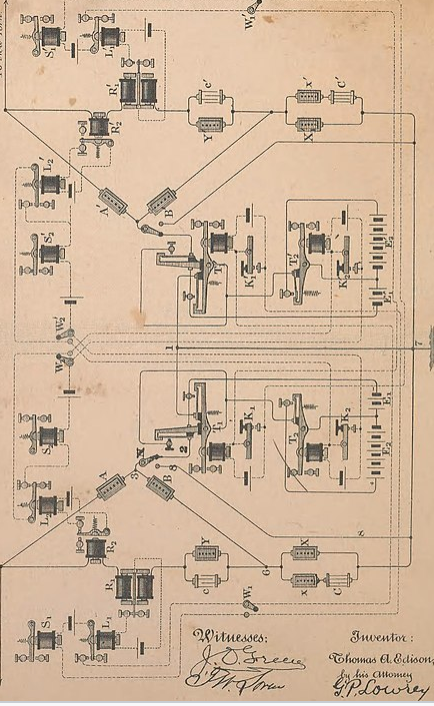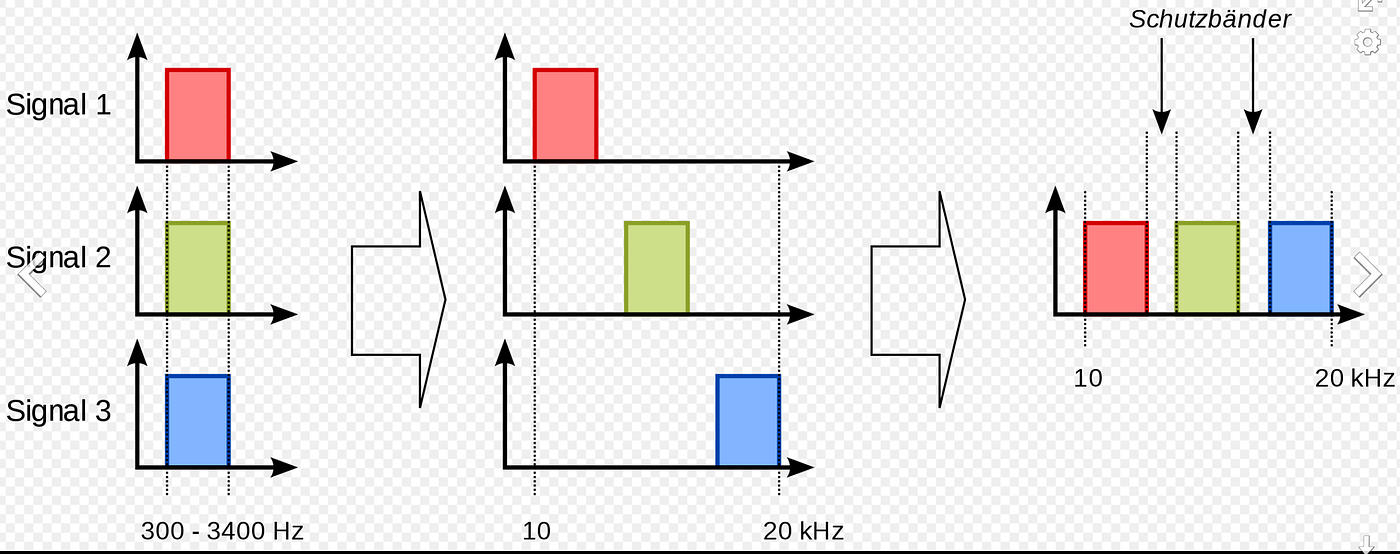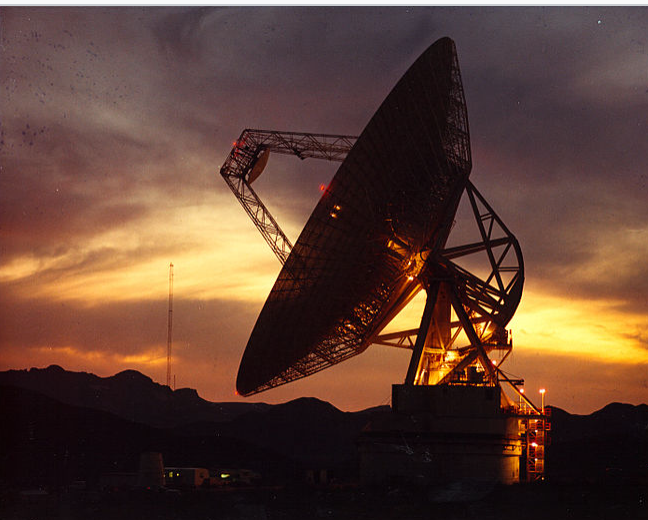What The Tech?! Multiplexing
Multiplexing introduced new ways to use the Radio Spectrum more efficiently.
When we think of communications before the internet, we tend to think of the land line telephone. And while this is an effective way of communicating, it typically isn’t particularly efficient.
For us to achieve modern connectivity, we’d require the implementation of many different types of systems. Some of these we’ve covered before. GPS Linking, the radio transmitter and fiber optics were essential parts of establishing this world.
In today’s What the Tech?! we’ll be exploring something that helped make more efficient use of the radio spectrum, as well as providing reliable, long range communications. It’s called signal multiplexing, and it’s as relevant today as it was back then.
The Beginnings
In the early days of radio experimentation signals were usually operated in a half duplex or full duplex manner. Effectively this means one conversation per radio frequency. While you could use more efficient means of signal generation (like morse code) the requirements came with inherent technical limitations.
However work on mitigating this came early, with the first experiments conducted in 1910 by George Owen. These tests were focused on more efficient usage of the land line telephone system and while rudimentary in nature, they were an important step in understanding the potential of this new technology.
This technology had also been tested earlier with the telegraph system. The Quadrex telegraph used time based multiplexing to send up to 4 signals along a single wire. Despite working reasonably well the system was ridiculously expensive, with the rights costing over $30,000 at the time.
These early concepts provided an important stepping stone to using communications more effectively, as providing a clearer and more stable line for doing so. Early communication modes were heavily influence by weather and the adoption of multiplexing techniques provided a resilience that wasn’t available to earlier analogue designs.
How it Works
The wonder behind the technology is the simplicity in how it all works. However there’s a few variances between the different types of multiplexing that’s available. Let’s ask Chat GPT for a quick summary of the differences between the various types.
Input: Describe the different types of multiplexing techniques.
Output: Multiplexing techniques are methods used to combine multiple signals for transmission over a single communication channel. Here are some of the main types of multiplexing techniques:
1. Frequency Division Multiplexing (FDM):
Description: FDM divides the available frequency spectrum into multiple non-overlapping frequency bands. Each signal is allocated a distinct frequency band, and the signals are transmitted simultaneously without interfering with each other.
Application: FDM is commonly used in analog communication systems, such as traditional voice telephony and broadcast radio.
2. Time Division Multiplexing (TDM):
Description: TDM divides the time axis into discrete time slots. Each signal is assigned a specific time slot, and the signals are transmitted sequentially. TDM is particularly effective in digital communication systems.
Application: TDM is widely used in digital voice communication, data transmission over networks, and digital television broadcasting.
3. Wavelength Division Multiplexing (WDM):
Description: WDM is used in optical fiber communication, where signals are transmitted simultaneously at different wavelengths (colors) of light. This enables multiple signals to share the same optical fiber without interference.
Application: WDM is commonly employed in long-distance fiber optic communication networks to increase data capacity.
4. Code Division Multiplexing (CDM):
Description: CDM involves assigning a unique code to each signal. The coded signals can then be transmitted simultaneously over the same frequency band. At the receiver, the signals are separated using their unique codes.
Application: CDMA (Code Division Multiple Access) is a form of CDM used in mobile communication systems to support multiple users on the same frequency band.
5. Space Division Multiplexing (SDM):
Description: SDM involves transmitting multiple signals simultaneously through separate physical pathways or spatial channels. This can be achieved through techniques like spatial beamforming or using multiple antennas.
Application: SDM is commonly used in wireless communication systems, such as Multiple-Input Multiple-Output (MIMO) technology.
6. Polarization Division Multiplexing (PDM):
Description: PDM utilizes different polarizations of light to transmit multiple signals simultaneously in optical communication systems. Each polarization is considered as a separate channel.
Application: PDM is often used in high-capacity optical fiber communication systems.
7. Orthogonal Frequency Division Multiplexing (OFDM):
Description: OFDM divides the frequency spectrum into multiple orthogonal subcarriers. Data is transmitted simultaneously on these subcarriers, allowing for efficient data transmission in the presence of channel impairments.
Application: OFDM is widely used in broadband communication systems, including DSL, Wi-Fi, and 4G/5G mobile networks.
These multiplexing techniques enable the efficient use of communication channels, increase capacity, and support various applications across different communication technologies. The choice of a specific multiplexing technique depends on factors such as the nature of the signals, the communication medium, and the requirements of the application.
Why It’s Important
It’s important to understand this technology because despite most people outside the communications industry, little is known by the general public with regards to precisely how background infrastructure works.
However it’s important to realize that without multiplexing strategies, the technology we take for granted today would be effectively useless if we needed to use one wire per signal. Fiber optic cable can carry thousands of signals compared to the transmission lines of old. Having telephone exchanges that could adequately manage this system became essential as the technology matured over the years and laid the groundwork for more complex, wireless based systems into the future.
The technology is pervasive, appearing in space, under the sea and above the ground on basically every continent in the world. In fact, it’s fair to say that without proper multiplexing the concept of mobile telephony at the levels we currently use it simply wouldn’t be viable in the modern world.
While multiplexing provides far more efficient usage of the spectrum, given it’s digital mode nature it also provides far more secure and weather resistant communication strategies.
It’s easy to realize that when we look at technology often legacy systems are still used for far longer than they should be simply due to the reliability they have in comparison to any proposed replacements.
A really good example of this is aircraft aviation, where amplitude modulation has been king for decades. Despite far more efficient modes being available for use, the reliability and range of VHF AM transmissions mean that they are still used by aircraft the world over to this day.
Looking Ahead
As we understand the impact this technology had on the world gone by we also realize that multiplexing will remain extremely common in the years to come. Despite the technology requirements from implementing such systems, it’s impact on the reliability of technology is unquestionable.
When we look at the interests of humanity, we also see that these align with a need for large, high speed scalable solutions for sharing data and information throughout the galaxy. As space programs increase and new research is conducted, getting signal and telemetry data back becomes ever more vital, so scientists and physicists are able to examine this new data, and figure out it’s meaning to humanity on earth. Multiplexed signals are an important part of space communications. Source: Wikipedia
Multiplexed signals are an important part of space communications. Source: Wikipedia
We can also expect Quantum Computing to play a large part in designing new protocols and more efficient usage of the spectrum. As quantum base strategies evolve, it’s natural to expect that militaries and their governments will have a large role to play in the adaption of this new technology. The development of AI based subsystems means that we can expect a new era in signal processing and communication strategies with artificial intelligence expected to do things like monitor signals and pull data out from the noise.
Lastly, we should expect new and more cyber resiliant ways of carrying out multiplexing. As the cyber front heats up, protecting this data will become a national security issue for nations into the future.
Regardless of our journey, the importance of optimized spectrum usage and transmission modes will remain relevant for humanity and it’s explorations for many years to come.
Medium has recently made some algorithm changes to improve the discoverability of articles like this one. These changes are designed to ensure that high-quality content reaches a wider audience, and your engagement plays a crucial role in making that happen.
If you found this article insightful, informative, or entertaining, we kindly encourage you to show your support. Clapping for this article not only lets the author know that their work is appreciated but also helps boost its visibility to others who might benefit from it.
🌟 Enjoyed this article? Support our work and join the community! 🌟
💙 Support me on Ko-fi: Investigator515
📢 Join our Telegram channel for exclusive updates or.
🐦 Follow us on Twitter and
🟦 We’re now on Bluesky!
🔗 Articles we think you’ll like:
- Software Defined Radio & Radio Hacking
- OSINT Unleashed: 5 Essential Tools for Cyber Investigators
✉️ Want more content like this? Sign up for email updates here




























